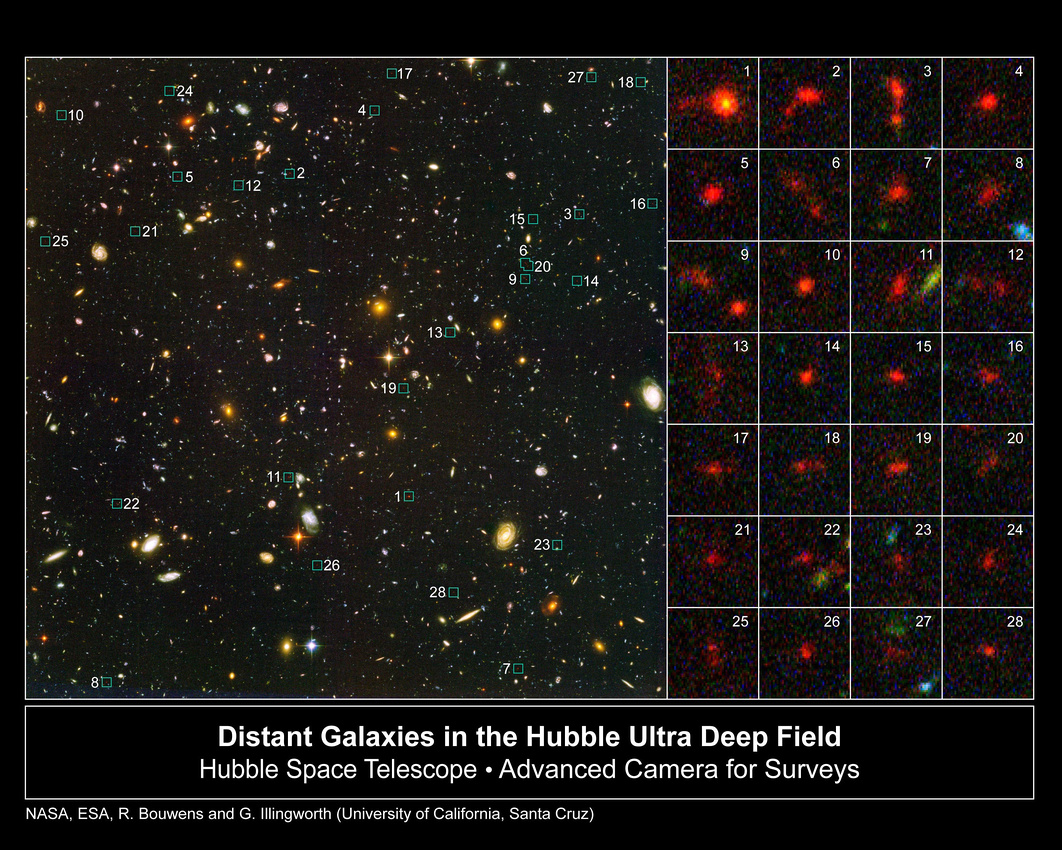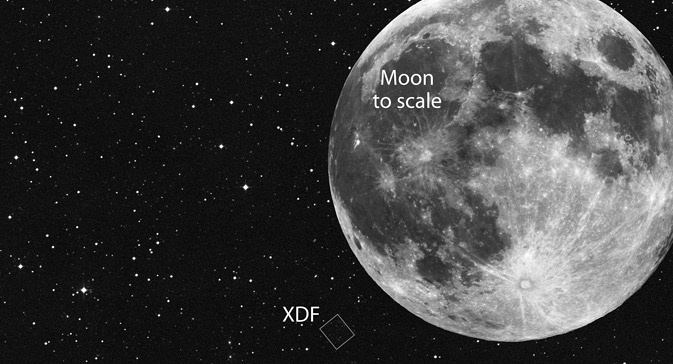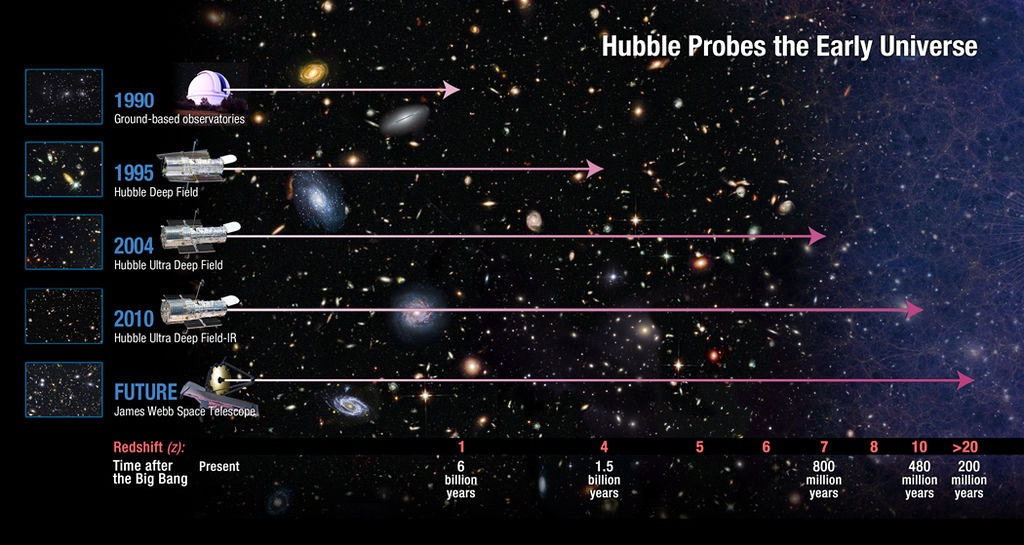That's a Big Twinkie
During my impressionable years, the colorful, astronomical photographs from the pages of National Geographic Magazine, fed my keen interest into the mysteries of the cosmos. Just look at the deep space picture below. It has been described as the most important photographic image ever. It was taken using multiple exposures from the Hubble Space Telescope during the period of 2003-2004. Count the number of galaxies before you. This view, known as the Ultra Deep Field (UDF), is one of the deepest visible light images of the cosmos, with nearly 10,000 galaxies, per NASA/ESA. In photographic parlance, the depth of field view here is more than 90% of the way to the edge of the universe. It represents a deep core sample of the universe, cutting across billions of light years.
Note that there are only a handful of obvious Milky Way galaxy stars (bright points of light with cross hair lines called diffraction spikes) in this image. This was with deliberate intention by the cosmologists to peer into the darkest zones of the universe, unobstructed by the clutter of the Milky Way. Many of the galaxies in this picture are over 12.7 billion light years away from our planet. Our solar system had not yet formed when the light we see now had left most of these galaxies. And this image only represents one narrow, deep slice of the cosmos located in the constellation Fornax. The patch of sky in which these galaxies reside in the UDF photo is just one-tenth the diameter of the full Moon as seen from the ground. There are actually about 500 faint red points in the UDF of young, distant galaxies that were formed less than one billion years after the Big Bang. These dwarf galaxies, ablaze with star birth, appear red due to the galaxies’ tremendous distance from Earth. The blue light from their young stars was shifted to red light due to the expansion of space. Twenty-eight of those 500 are isolated in the second UDF image shown below.
During Hubble's 2009 servicing mission, a new infrared instrument was installed, enhancing its capability for even deeper space photography. An image (not shown), dubbed the eXtreme Deep Field (XDF), was assembled in 2012 by combining 10 years of Hubble photographs taken of a smaller patch of sky embedded in the center of the original UDF field of view. An additional 5,500 galaxies were located beyond what UDF indicated. The XDF field of view relative to the size of the moon is shown in the photo below.
Whereas the UDF goes back to about 12.7 billion years, the XDF image reveals galaxies that span back as far as 13.2 billion years in time. For a universe that is 13.7 billion years old, the depth of field for the XDF view is to the outer fringes of the universe. For the first time, we can now view the actual forms and shapes of galaxies when they were young and impetuous. The XDF image is like a time tunnel into the past with the light from colliding galaxies just now arriving here on Earth. Yes, that's right. You are viewing galaxies and stars as they existed and looked eons ago. One of the galaxies on the XDF image existed just 450 million years after the Big Bang's creation of the universe.
But Wait! There's more! NASA/ESA already have plans to penetrate deeper into space. After its launch in 2018, the James Webb Space Telescope will be aimed at the XDF to locate even fainter galaxies, a couple of hundred million years old after Big Bang. See the photo below, Hubble Probes the Early Universe. This will takes us back into a time shortly after the Big Bang, when the first stars and nascent galaxies were formed to finally light up and reheat the dark age period of the cold, dim universe's evolution. This reheating period evidently took place over a few hundred million years. Refer to the photo below, Age of the Universe.
The area of the sky observed in the UDF has been compared to the view you would see through an eight foot long soda straw. So imagine for a moment that you possess super visionary power, one with extreme magnification and light sensitivity levels. You peer through this straw and count over 15,000 galaxies, each one containing over tens to hundreds of billions of stars, planets, gas clouds, and space dust. Now move the straw the distance of one straw diameter and count the next 15,000 celestial wonders. Now repeat your super power skills 30 million more times until you have completed your sweep of the sky. You, with your super-vision powers, just viewed over 450 billion galaxies of our universe.
A deeper cut of pizza slice, deeper than XDF is awaiting our viewing in three years. Unfolding before our eyes, like a time machine, we will witness the evolution of the universe. Think about it. And to blow your minds even further, the universe is expanding, in some cases, faster than the speed of light, ultimately to a distance of 47 billion light years. From the immortal words of Winston in the movie, Ghostbusters, "That's a big Twinkie".
The most important photographic image ever, indeed.
For more incredible deep space images, see:
http://www.spacetelescope.org
D W Orr
Environmentalist, Historic Preservationist, and Photographer
Harford County, Maryland
October 14, 2015
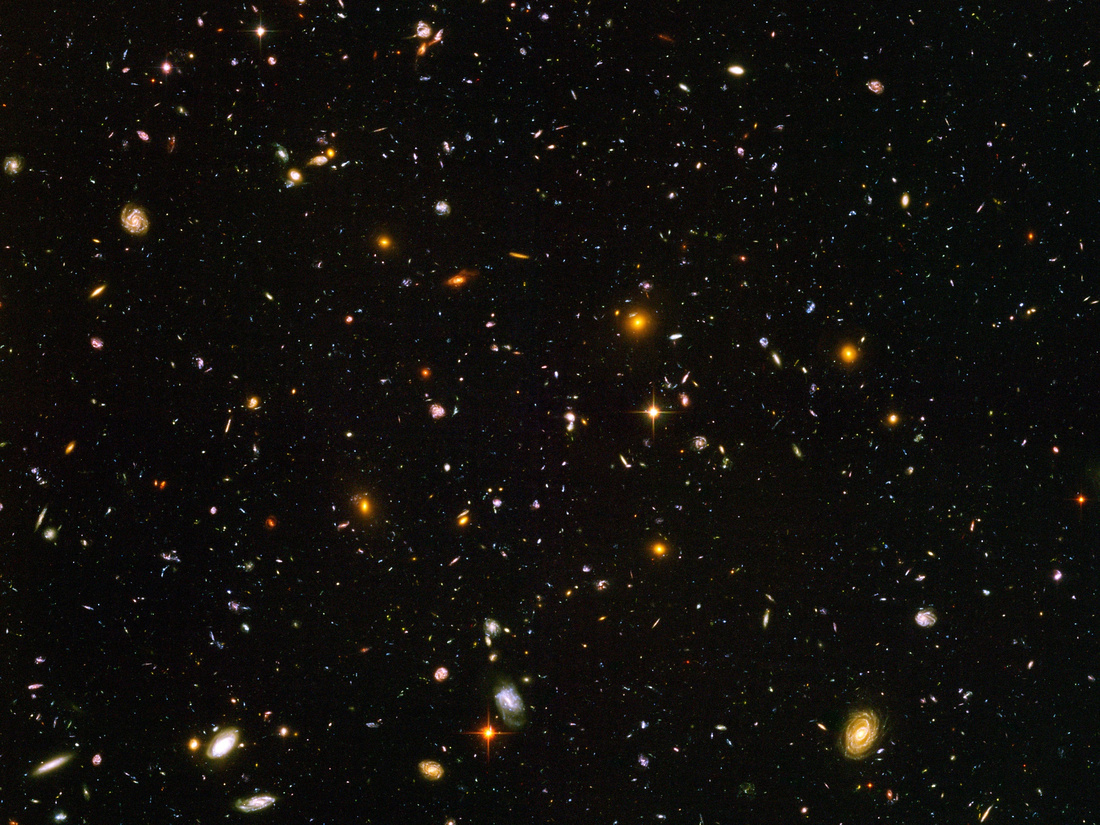
 Ultra Deep Field Photo of Cosmos, courtesy of NASA/ESA
Ultra Deep Field Photo of Cosmos, courtesy of NASA/ESA
Ultra Deep Field Photo of Cosmos with 28 Isolated Young Galaxies, courtesy of NASA/ESA
XDF Field of View Relative to the Size of the Moon, courtesy of NASA/ESA
Hubble Space Telescope Penetrates Deep Space, courtesy of NASA/ESA
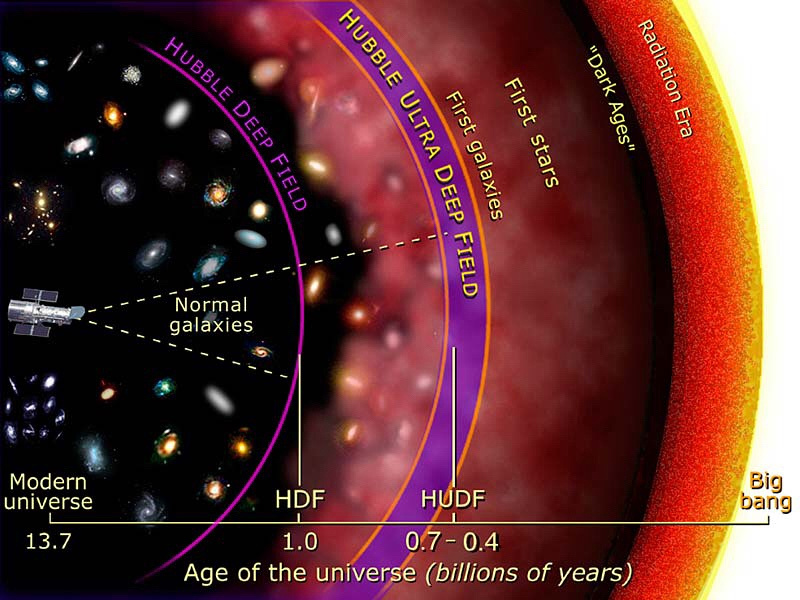
 Age of the Universe, courtesy of NASA/ESA
Age of the Universe, courtesy of NASA/ESA
Note: For the image directly above, the reference HDF = My Blog's UDF, and HUDF = XDF. Unfortunately, NASA has interchanged their language over time.
